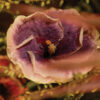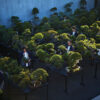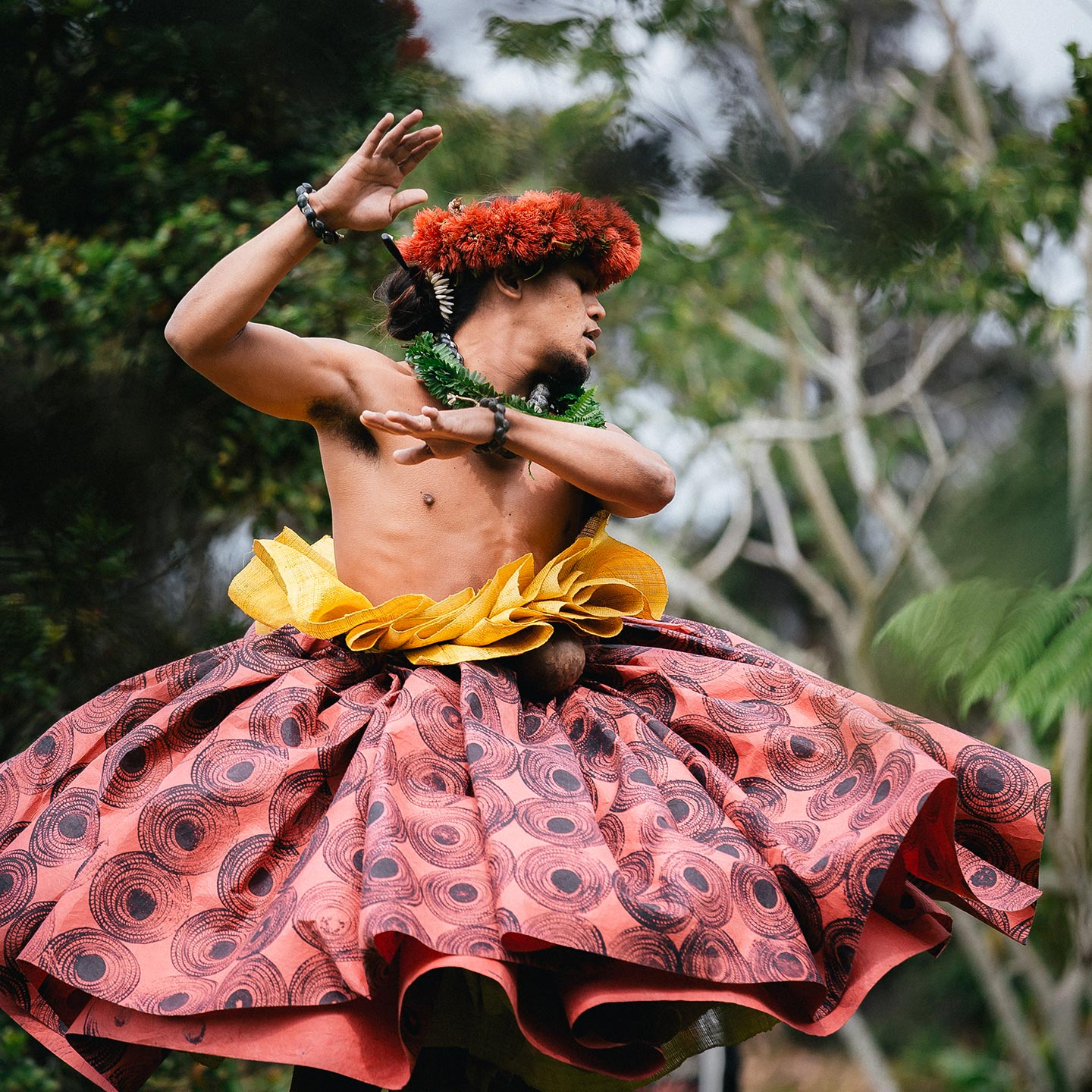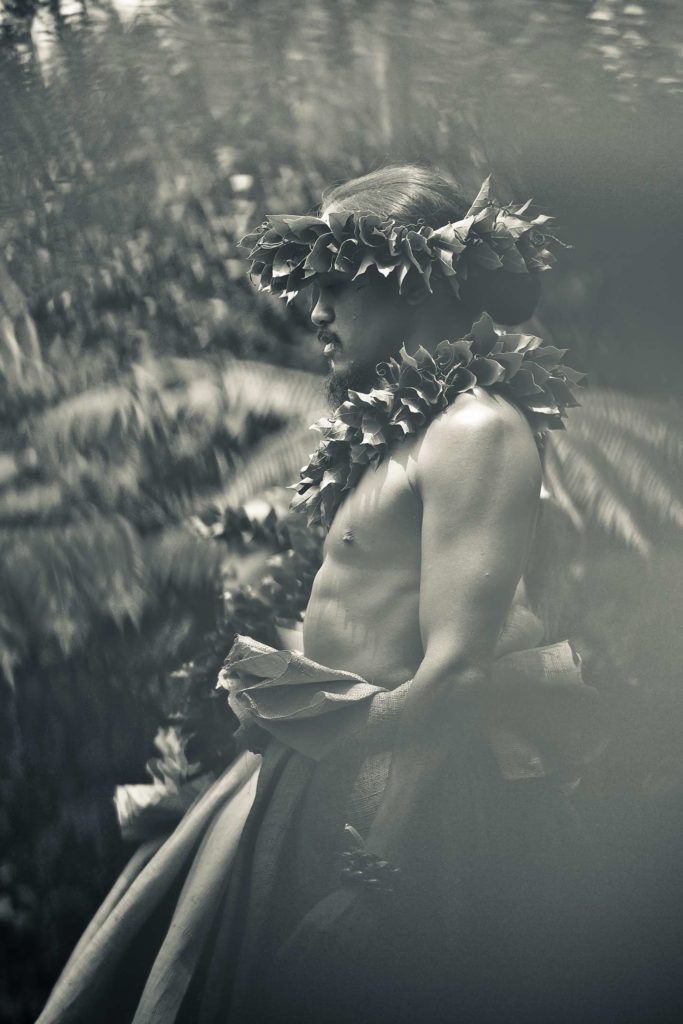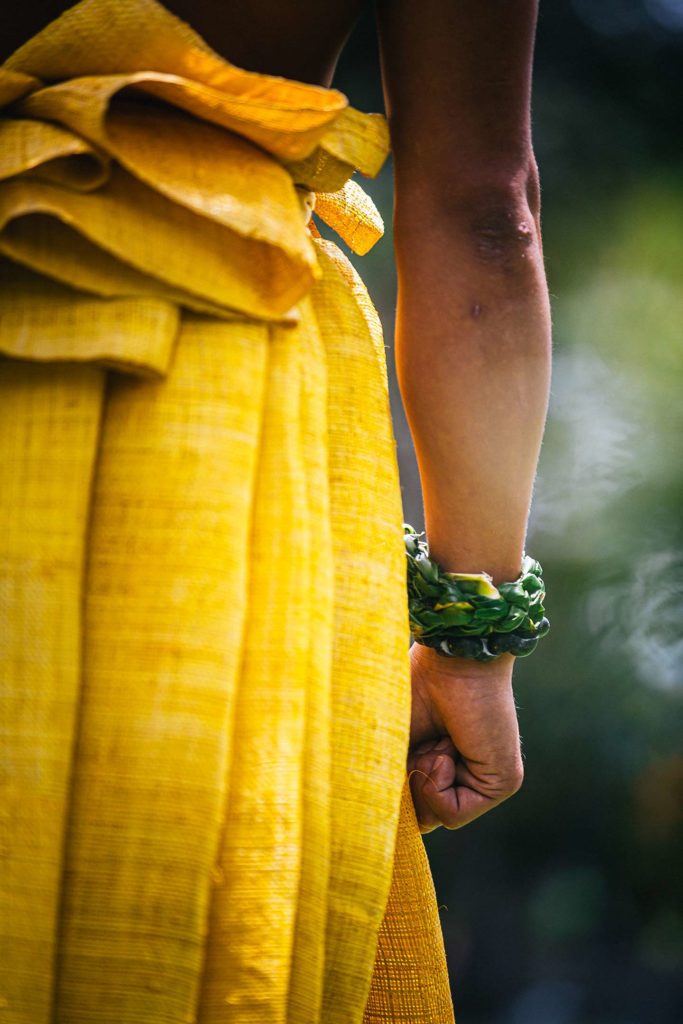Text and images by Dino Morrow
One of the first things that sets apart the visitor experience in Hawai‘i is language. Even before stepping off a plane onto the islands, most travelers know at least a couple Hawaiian words, like aloha and mahalo. The word kumu, meaning “teacher,” may not be one of them, but I believe it should be.
I am grateful and humbled by the kumu, the teachers, I meet through documenting hula as a photographer. While many of my kumu are terrestrial—they have frequent flyer numbers, voice their opinions on most things, and are a wealth of historical and highly specific, skilled knowledge—one of my most important kumu isn’t a person, but the art form of hula itself.
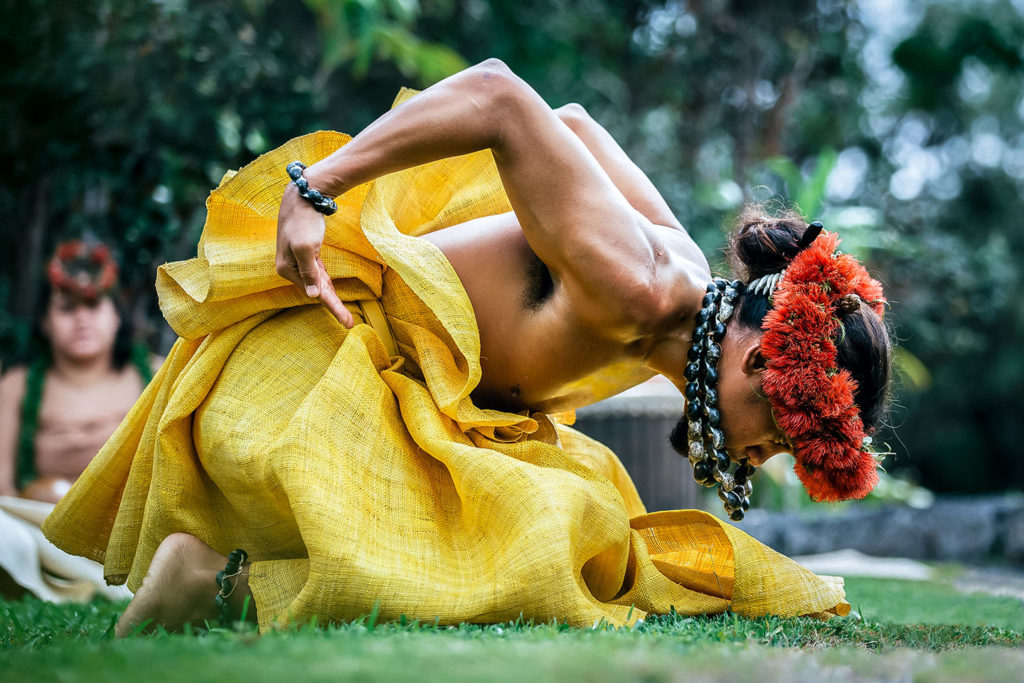
For most people, learning from hula means mastering oli (chants), practicing movements that require the raising of heels or bending of knees, and gathering tī leaf to make hula skirts by hand. However, my kumu came to me another way: through a camera.
To me, the ultimate value of an image is that participants feels its perspective and composition are honorable and authentic. My aim is to capture the mana each and every location and dancer stirs within me, to share what my kumu has shown me.
My kumu is hula, and her classroom is the island of Hawai‘i. From Pele’s home in Halema‘uma‘u atop Kīlauea to a Merrie Monarch hula about Hualālai in Kailua-Kona to keiki dancing about Kalapana, the lessons of hula and the connection to Hawai‘i Island are ever-present.
Everywhere you go on this island, there is an ancient history, a powerful story of the Hawaiian gods and their people. I have also learned that when I approach a sacred space, I should announce my presence, ask for permission to enter, and ask for forgiveness for anything negative I might bring or do.
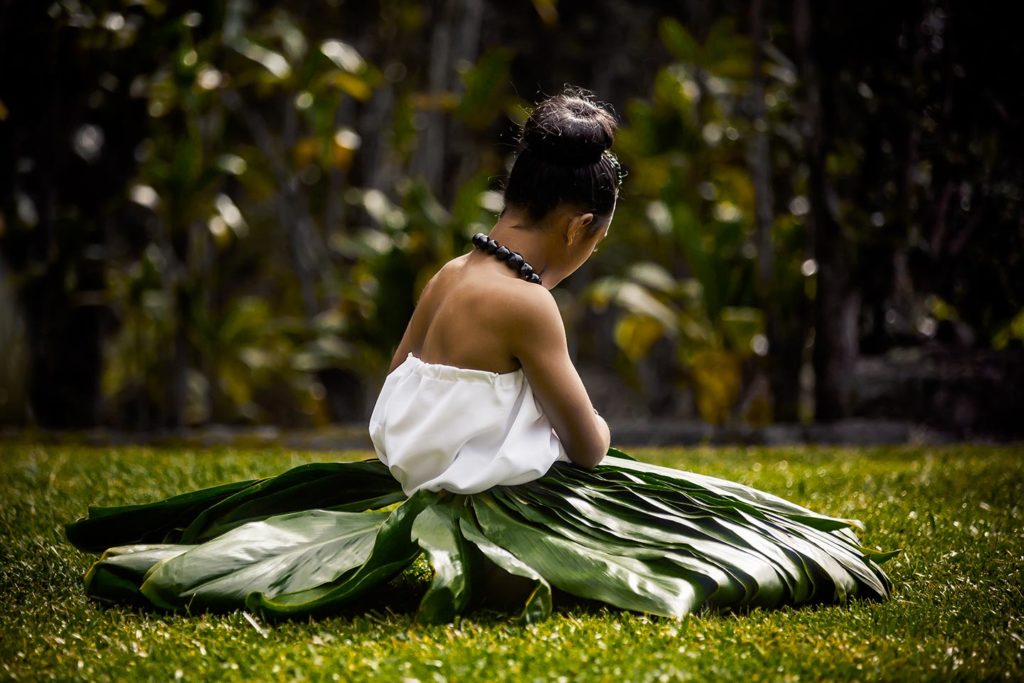
My experience as a photographer, and in life, has been a study in working as an insider and an outsider: I document identity and sense of place in Hawai‘i, but I am not Hawaiian.
I capture sacred moments, families dancing together the same steps their ancestors have for hundreds of years, but this is not the tradition in which I was raised. My son’s first food was poi, but I was raised on Wonder Bread.
In my role as insider and outsider, I have learned that for many people, hula is not a hobby but a lifestyle.
Some dancers even say hula is life. Their dedication, discipline, attention to detail, and devotion can rival that of any professional athlete or broker on Wall Street.
The person who just checked you in for your car rental, the executive director you met for drinks, the single mom in the lifted pickup truck, the friendly grocery store cashier, all may very well be accomplished hula dancers.
I have seen the hours, days, and months of preparation add up to those fleeting few minutes of graceful movement. I have learned that a kumu hula saying “almost ready” can mean the hālau continues to practice from the top over and over and over. I’ve seen how kumu teach dancers to develop muscles, moves, and mana to become their best selves.
From my kumu, I have learned that hula is more than just an expression of a story or prayer. In hula, the body, mind, and spirit are developed to act as one. Many of the traditions passed down through generations emphasize this unity.
Without the Hawaiian language, there would be no hula. Without the stories of kūpuna, there would be no shared values, protocol, or responsibility.
I have learned that living traditions—interactions between people, land, and practices—are not static. History is fluid.
There are volumes I don’t yet know, and dimensions of hula that I never will.
From my kumu, I have learned to be open to learning, because hula always has something to teach.

